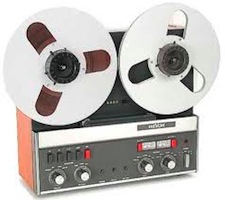It’s the time of year for saving money!
 The other day I was looking through my collection of late
The other day I was looking through my collection of late
50’s and early 60’s Audio magazines when I noticed something – many of the ads
were for recording rather than playback devices. Microphones, tape recorders,
microphone preamps, and even tape splicing blocks could be found in abundance
in these pages. Also many of the feature articles were aimed at audiophiles who
made their own recordings.
Flash forward to today – rarely do consumer audio
publications review or even mention recording gear aimed at the audio
enthusiast. Occasionally during my career I’ve reviewed a PCM or DSD recorder for
TAS or Stereophile, but generally consumer audio publications are about as
interested in recording gear as pro audio mags are in $20,000 DACs.
Over the last fifty years audiophiles have morphed from
music creators and consumers into solely consumers. I think that’s a shame.
When I began reviewing audio gear back in the early 80’s I
quickly realized there was a big hole in my arsenal of tools – recordings that
I knew thoroughly from the live sound in the room to the finished recording.
The only way to remedy my plight was to begin making my own recordings. Since I
didn’t have the skills or tools I apprenticed myself to the best recording
engineer I could find in Boston – Mica Shatner. I worked as Mica’s assistant on
location recordings of the Boston Philharmonic, New England Conservatory
Orchestra, Boston Camerata, and the Emerson Quartet. My job was simple – schlep,
lay cable, remove cable, coil cable, and keep my eyes and ears open and my
mouth shut (that last part was always the hardest.)
I learned how to hear a room (clapping helps) anticipate
how and where to place microphones, and monitor in acoustically unfriendly
spaces. I also learned that recording is far more of an art than a science. You
can do all the measuring you want, but in the end an engineer must rely more on
past experience and intuition more than anything else in their creative
repertoire.
Making recordings also taught me how to hear and listen
for microphone colorations and pic-up patterns (which often create some of
those colorations). When I listen to a playback system I want to hear the
microphones’ character come through. On a reference-level system, such as the
Lamm – Wilson set-up at the 2011 CES, when I listened to Peter McGrath’s recordings I could easily hear exactly what the microphones were doing.
It’s never been easier to make high-quality recordings. I
fervently hope that more audiophiles will begin making their own recordings,
both for reference purposes and for the pure enjoyment of accurately capturing
a musical moment. I guarantee it will make you a better listener.





